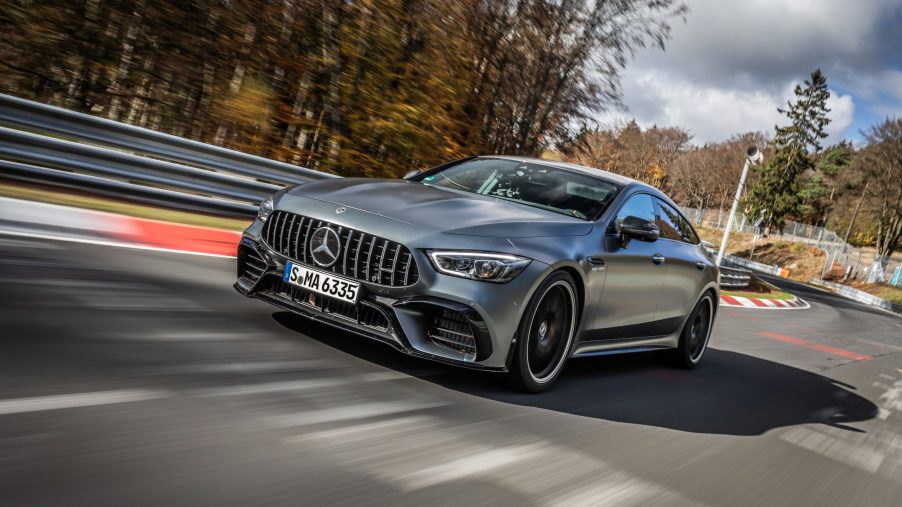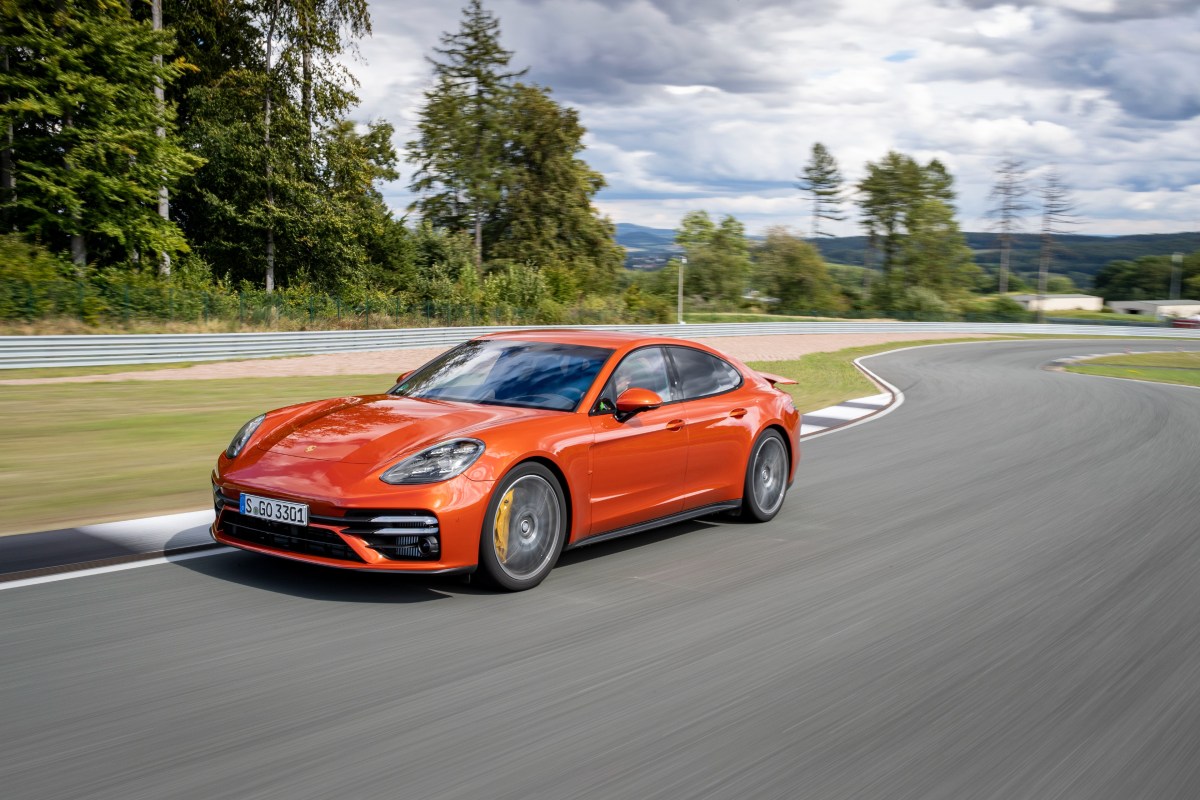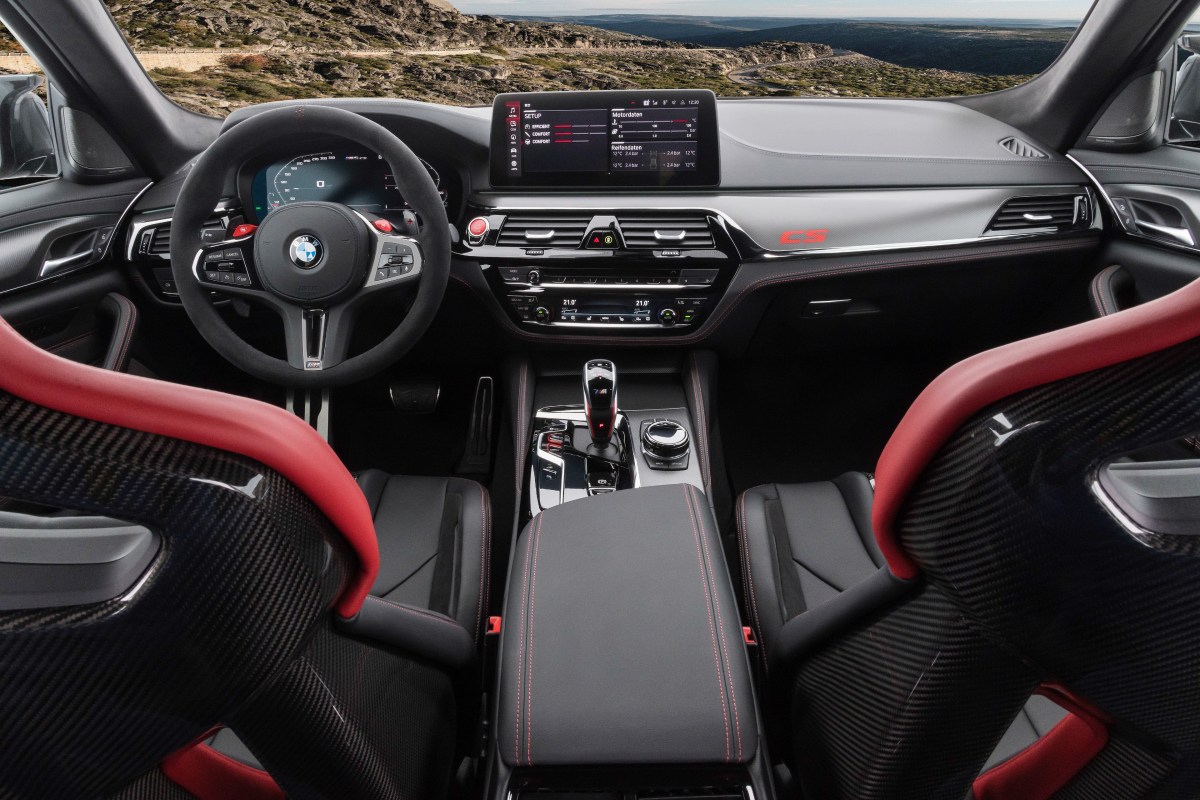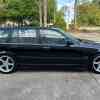
Super Sedan Showdown: The BMW M5 CS, Mercedes-AMG GT 63 S and Porsche Panamera Turbo S Signal the Last of the Fossil Fueled Fast Four-Door
Around 65.5 million years ago a comet punched a hole through the atmosphere and impacted Earth near the Yucatan peninsula in Mexico. This single event changed the course of life forever, wiping out the dinosaurs and allowing mammals, and eventually humans, to flourish.
Mass extinction events are disturbingly common on planet Earth, but when it comes to cars, those changes tend to be more gradual than immediate. We are living through one of those changes right now, as auto manufacturers transition from fossil-fueled vehicles to hybrid to fully electric.
In the case of super sedans, we are now experiencing the last generation of purely fossil-fuel-powered machines. The transition to hybrid and then fully electric is happening even as we speak. The next generation of BMW M5 will be hybrid, along with the offerings from Mercedes-AMG and Porsche. Even the Hellcat-powered cars are going the way of the dinosaurs and Dodge has already started teasing their EV future.
But before they go completely extinct, let’s take a look at the current crop of super sedans and find out which old-school fossil burner is best.
The BMW M5 CS, the original super sedan
The BMW M5 needs no introduction, it practically invented the super sedan category. Beginning with the E28 M5 in 1984, it has been the go-to for people who want sports car performance in a sedan shape.
The new M5 CS brings supercar performance to BMW’s 5 Series sedan. A 4.4-liter twin-turbocharged V8 churns out a tire-shredding 627 horsepower. Combine that with added lightness, trick aerodynamics, and the ability to switch from two-wheel drive to four, and you have a recipe for a car that can get from 0 to 60 mph in 2.9 seconds. The M5 CS is more than just an acceleration time, it is a track day car for four people and their luggage.
The Mercedes-AMG GT 63 S, Affalterbach’s menacing record breaker
Mercedes-Benz calls the AMG GT 63 S a four-door coupe, which seems like an oxymoron. Regardless of naming conventions, the sleek sedan is an absolute brute. Mercedes will debut a new version, with over 800 horsepower later in 2022, but until then, the 2021 AMG GT 63 S is the king of the hill.
Like the M5, the GT 63 S is powered by a twin-turbo V8. In the Merc, it comes in the form of a 4.0-liter V8 and pumps out a beefy 630 horsepower. Mated to the 4MATIC all-wheel drive system, the V8 is capable of slinging the GT 63 S to 60 mph from a standstill in just 3.1 seconds.
The Porsche Panamera Turbo S, a big car with performance to match

When Porsche debuted the Panamera in 2010, it was met with some measure of resistance. Traditionalists didn’t like that Porsche was making anything other than the 911, and sportscars and people with eyes thought it looked ungainly and bulbous.
Twelve years later, the Panamera still has the same reputation. Facelifts have helped in the looks department over the years. The performance of the current Turbo S model has gone a long way to prove that the Panamera belongs in Porsche’s model line-up.
A 4.0-liter twin-turbo V8 (there seems to be a theme emerging here) puts 621 horsepower through all four wheels. That’s good enough to propel the Panamera from 0 to 60 mph in 2.9 seconds.
How do they compare?

On paper, there is very little between these three cars. Each will explode off the line, get you to 60 mph in about three seconds, and take you up to a top speed of close to 200 mph. They all have V8s with forced-induction, all-wheel drive, and eye-watering price tags. The M5 CS starts at $142,000, the Mercedes-AMG GT 63 S starts at $161,900, and the Porsche Panamera Turbo S starts at $179,800. So from a value standpoint, the M5 CS wins, although we use the term “value” loosely here.
Let’s get the practical stuff out of the way so we can talk about what these cars are really about, performance. None of these cars are what you would call efficient. They are going to return MPG figures in the low 20s on the freeway. If you have a heavy right foot or go on a track day, expect that to drop into the single digits.
The one practical metric that does make a difference is space. Each car can easily accommodate four adults and their luggage, but the Panamera Turbo S has the most trunk space. At 17 cubic feet, it is easily more voluminous than the M5 at 14 cubic feet and the GT 63 S at an anemic 12.7 cubic feet.
When we talk about performance, on paper, these cars should be very similar, but the truth is they are very different. The fastest car around a racetrack is the AMG GT 63 S. It has been on a campaign to rid the world of track records since it debuted. The GT 63 S holds the honor of being the fastest street-legal production sedan at the Nurburgring as well as at Laguna Seca. The M5 CS is a close second, with the Panamera nipping at their heels in third place.
Which one is best?
This is a much harder question to answer than you think. Preference is very personal, and we all want different things for different reasons. If you want the fastest four-door sedan over a single lap, then the Mercedes-AMG GT 63 S is hands down the best. It is an epic track monster with superb poise and balance but isn’t necessarily ideal for all-day track duty.
If you’re after a stonking-great sedan that is equally at home in the office parking lot as it is at a track day, then the M5 CS is the answer. The BMW will happily take you to and from work, pick up the kids, and humiliate sports cars on the race track all day, every day.
In the middle lies the Panamera Turbo S. It is unbelievably fast and very much feels like a Porsche when pushed hard on the track, but really should be thought of as an epic mile-muncher with tons of space for a weekend getaway. Yes, it can do track duty, but you’ll enjoy it much more on the sweeping bends of your favorite mountain road on the way to a weekend on the slopes.
The pure gasoline-powered lunacy of these super sedans is dying fast. Both the M5 and AMG will be going hybrid before going completely electric, and Porsche already offers the Panamera Turbo S with a hybrid setup. Would it be at all surprising to wake up one day and learn that Porsche had replaced it entirely with the Taycan? Enjoy these cars while they last; they might be the last hurrah for fossil-burning super sedans.
Related: 2022 BMW M5 CS vs. Dodge Charger Hellcat Redeye: Which Super Sedan Is Faster?


